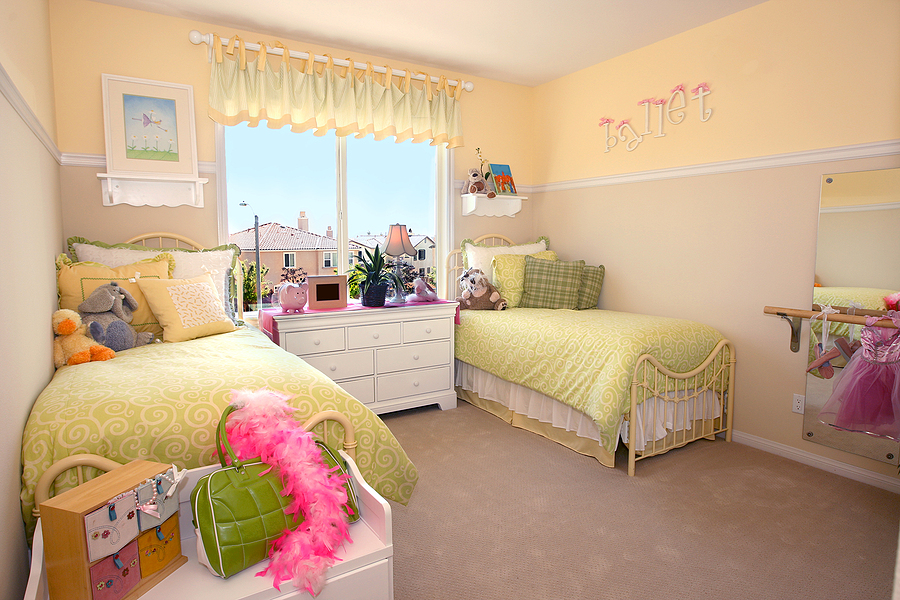
A nagging tickle in your throat has you coughing nonstop for hours and keeps you up all night. No matter how much you cough, you can’t seem to clear your throat. You’ve coughed so much your throat stings. Coughs may … Continue reading
READ MORE
Fresno’s weather is ideal for kids. Sunny days, mild winters, and plenty of outdoor places allow kids to play outdoors year-round. However, high pollen counts cause issues for children with allergies.
Much of Fresno is agricultural, and that leads to high pollen counts. Whether it’s almonds, grasses, stone fruits, or weeds, allergens are numerous. Add smoke and particulates from wildfires, farming, and manufacturing. If your child has allergies, Fresno’s environment can be challenging.
Reduce exposure to allergens to help keep your child comfortable. Toddlers need 11 to 14 hours of sleep each day, while school-aged children need 9 to 12 hours. Even teens require 8 to 10 hours. One of the best areas to start with is the bedroom, as your child spends around half the day in there.
Outdoor allergens are one area of concern, but there are also indoor ones. If you have pets, there is pet dander. A damp basement, bathroom, or leaking roof increases mold spore counts. Dust mites and dust are also concerning. Plus, you carry in allergens from outside on your clothes, shoes, skin, and hair.
Knowing where allergens collect and how they get there is the first part of reducing allergy symptoms. Since your child spends a lot of time in the bedroom, it’s a good place to reduce as many allergens as possible.
Bedding and throws
Flooring
Furniture
Toys
Window coverings
Those items need to be cleaned on schedule. They must be cleaned correctly. After focusing on them, cleaning needs to extend to other areas, too. If you only clean your child’s bedroom, allergens from other rooms could be carried into your child’s room on clothes or through ducts in the HVAC system.
We recommend avoiding items that are hard to wash, such as throw pillows and fabric-covered bean bags. If your child wants a bean bag, get one with a washable cover or one that is easily wiped clean.
Your child is in bed for a good percentage of the night. Reduce allergens in the bedding to help lessen your child’s symptoms.
Use hot water or the bedding cycle if your washing machine has one. Strip sheets and pillowcases every week and wash and dry them thoroughly.
Cover the mattress and pillows in dust covers that you can unzip and remove. If they’re plastic or vinyl, wipe those down with an antibacterial wipe or water and vinegar while you’re washing the sheets. If you have washable covers, wash them each month.
Don’t purchase comforters that are dry-clean only. Get lightweight cotton comforters that are machine washable. Wash every couple of months.
When the sheets and mattress covers are off the bed, sprinkle baking soda over the mattress and let it sit for an hour or two. Thoroughly vacuum the mattress before putting sheets back on.
You lower the risk of dust mites when you keep the protective covers and sheets washed and dried regularly. Ideally, you want water that is a minimum of 130°F to kill the microscopic mites.
It’s better to have hardwood flooring if allergies are bad. If that’s not possible, carpeting should be a low-pile and hypoallergenic material.
Vacuum carpeting daily with a vacuum with a HEPA filter. Consider using a steam cleaner or hiring a professional carpet cleaner once a year to deep clean the carpeting.
If you have window coverings, make sure they’re machine washable. If your child has blinds, get a material like bamboo that’s easy to wipe clean.
Make dusting a daily job. There may not be much dust to remove, but the more you remove from the room, the easier it is on your child.
Avoid upholstered furniture as much as you can. Try to stick to leather or imitation leather furnishings that can be wiped down every day.
If your child has stuffed animals, toss them in the washing machine each month. Other toys can be wiped clean of dust and other allergens. If you cannot machine wash the stuffed animals, place them in a freezer bag to kill dust mites.
Does your child have toys that aren’t used daily? Store them in wooden cabinets or toy chests. Plastic totes are a good substitute if needed.
Once a bedroom is clean, focus on improving the air quality. Add an air purifier with a HEPA filter and UV lights that kill microbes. Make sure it’s the appropriate size for your child’s bedroom. Change the filter or clean the filter as directed, or sooner if you notice the filter getting dirty quickly.
Use a medium or high setting and run the air purifier 24/7. It’s the best way to keep air circulating and capturing additional allergens.
Do you have a furnace and AC system with ducts? Change the air filter every month or two. Don’t let the filter get extremely dirty before replacing it. Use the highest MERV rating you can. MERV-11 or MERV-13 is best. Check the HVAC system’s owner’s manual. You don’t want to strain the system with a filter that’s too restrictive.
Keep your child’s bedroom window closed. On nice days, it’s tempting to air the room out, which lets outdoor allergens in.
You also want to keep dust mites from thriving. Fresno’s climate is drier than some regions, but your home may have higher humidity levels if you have inadequate bathroom exhaust fans. Aim for a humidity level of no more than 50%. Ideally, you want it to fall in the 30% to 50% range.
If your child is allergic to pet dander, you need to keep pets out of the bedroom. Even a hypoallergenic breed is going to have dander. Regular baths help lower the amount of dander, but it doesn’t get rid of everything.
A newer cat food suggests the formulation lowers allergens in a cat’s saliva. The food went through over a decade of testing. It works by reducing the antigen Fel d 1 using an antibody produced from chicken eggs. After six weeks, the food reduced allergens by 47%.
Pet food alone isn’t enough to end pet dander allergies, but it can reduce them. This helps reduce the amount of feline saliva being spread to the skin and fur during grooming.
Allergies can be part of life, but that doesn’t mean your child should have to suffer. If allergies impact your child’s sleep schedule or school attendance, see a doctor. If watery eyes, coughing spells, and congestion make your child uncomfortable day and night, it’s time to take action.
Talk to your child’s pediatrician and ask for a referral to an allergist. It’s important to ensure your child’s allergies are properly diagnosed and treated. An allergist specializes in allergies and asthma and offers treatment options that provide lasting relief.
Allergies are no fun. Don’t let your child tough it out. Schedule an appointment with Premium Allergy & Respiratory Center to have your child tested and find effective solutions that ensure your child breathes easily and enjoys an active childhood.